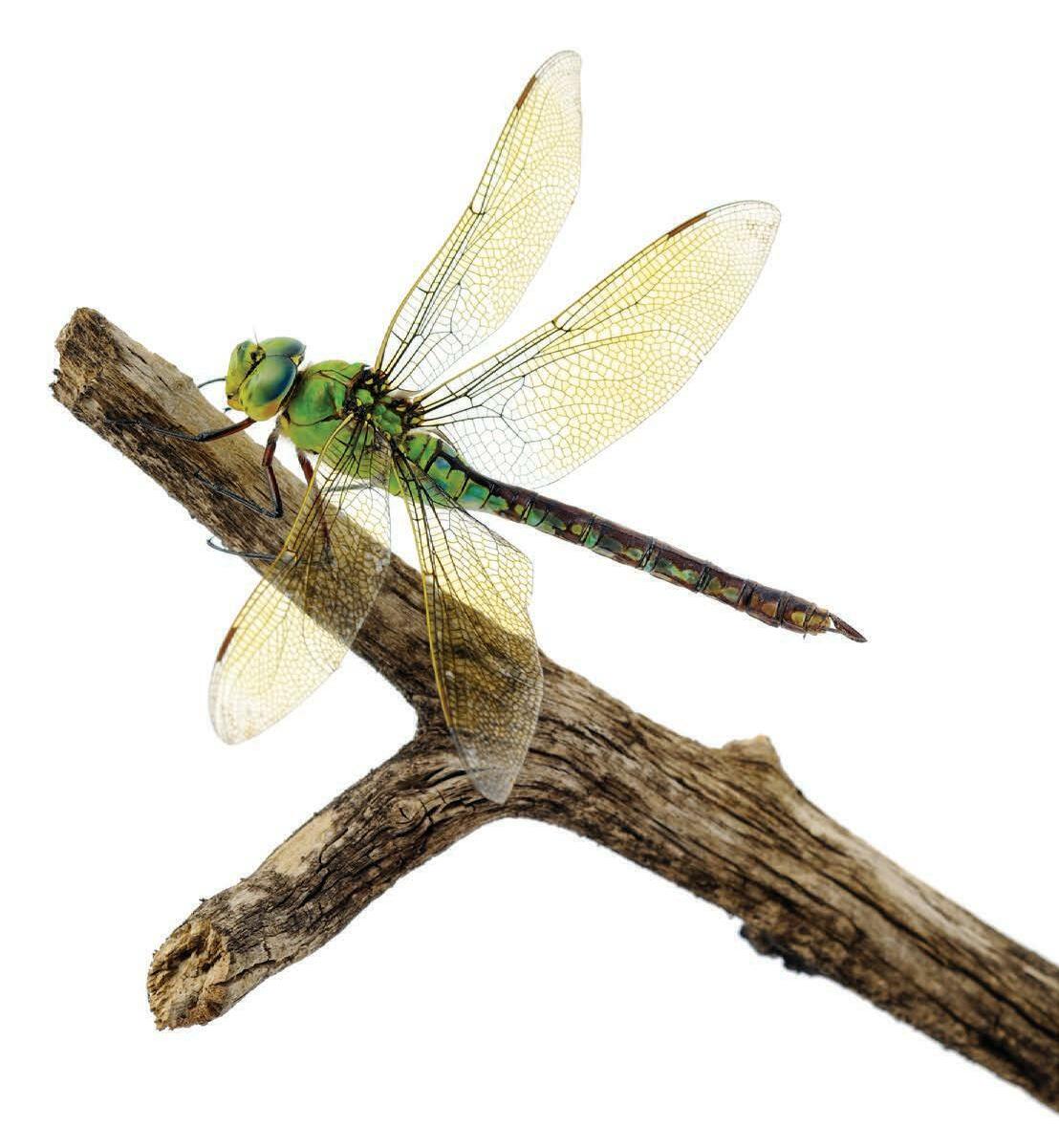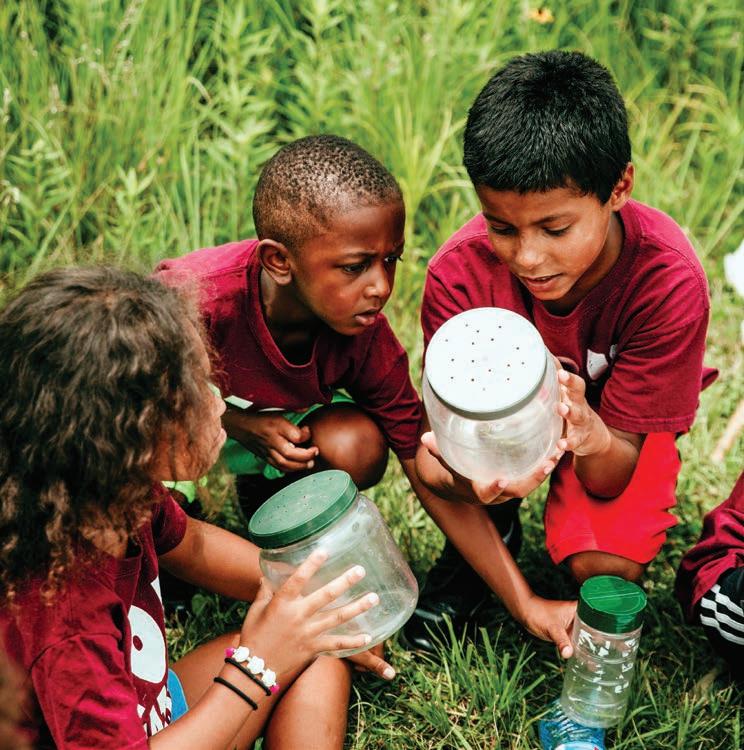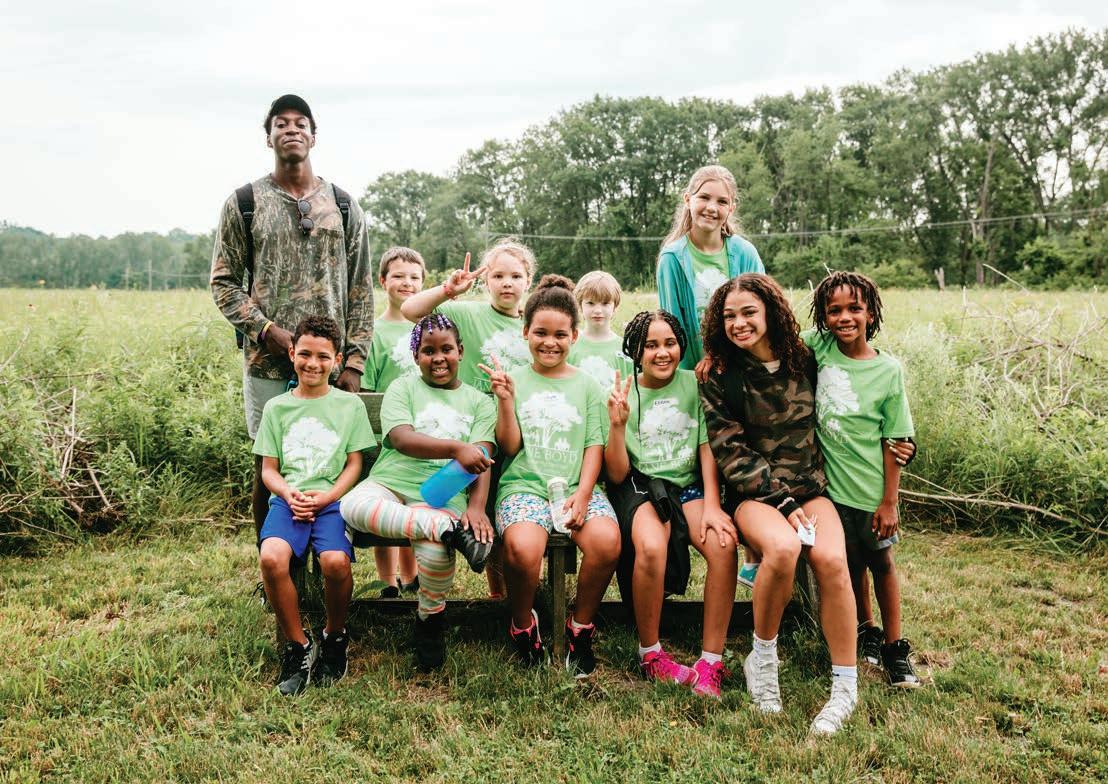
6 minute read
Education
Fun with Fresh Air Academy
by Education Manager Andria Cossolotto
Advertisement
Fresh Air Academy has been a great, immersive, educational experience for not only the children enrolled, but also for staff who get to share the joy of exploring outside with them. While there are many special memories in a year of adventures, one memorable day gives a glimpse of what this wonderful program is all about.
After discussing how everyone’s previous evening had been, we began with a lesson on the differences between vertebrates and invertebrates. Once completed, we started out on our first adventure: a hike where we wrote down every creature we saw, from insects to birds and mammals, to name a few.
Kids are excellent spotters of critters and we had quite a list going when one of the kids said, “I see a puddle!” This became our first stop of the day. One of the kids picked up a stick and pretended to fish. It did not take long before he “caught” one. When asked about his catch the child declared it was a sunfish! We decided to add the imaginary fish to our list before continuing on. By the time we stopped for a snack we had quite a list: birds like woodpeckers and hawks, as well as insects, spiders and Armadillidiidae. As we ate we discussed which ones were vertebrates and which ones invertebrates.
Before we continued, I talked to the kids about birds. I showed them pictures of several birds along with replica eggs. We discussed differences in color and sizes of eggs. The kids soon noticed that the bigger the egg, the bigger the bird. They were amazed to see the difference between eagle and hummingbird eggs. One girl noticed her yogurt-covered raisins looked similar to a hummingbird egg. We held them next to each other and the hummingbird egg was smaller! We continued on our hike and believe it or not, came across an egg just lying on the trail. Based on the size of the egg, they quickly deduced the likely size of the bird that laid it. I was not familiar with the egg, so I looked it up later. The next day I was able to let them know it was a northern mockingbird egg. When we returned to Amazing Space we spent time hiding in the prairie grasses near the bird feeders to do some birdwatching. Despite their excitement at being so close, they sat very still so as not to spook the birds. When we were done observing, they enthusiastically shared their observations, including that some birds eat right at the feeder, whereas others take a seed and fly away to eat it. One child pointed out that the woodpeckers usually went to the green feeder (suet). We then discussed food preferences and beak shapes. Soon it was time to wrap up and get ready for parents to arrive. The kids let me know that when they got to choose their own activities on that Friday, birdwatching and hiking would be on the agenda. While they were waiting for their parents, some of the kids asked if they could go into the prairie and look around. I said they could as long as they stayed close. They decided to hide and observe their parents. The giggles I heard coming from the prairie made my day.

“I tell my friends that if they have a child who is a video game junkie (as my older son used to be), that they should do Fresh Air Academy. It opens up a whole new world to kids...the world of nature. It has been fun watching my boys get excited about rocks and leaves and bugs. I've seen maturity in my older son in other ways as well. He is more social and more calm. My younger son was really jealous last year that he couldn’t join. He has been having a blast as well! Great programs and educators!”
—Laura Barnett

Soaking up summer at Creek Camps
by Senior Naturalist Emily Roediger


Creek Camps returned this summer, and while they looked different in some ways — smaller capacities and half days — they were also somewhat “normal,” too. We always end each day of camp asking kids about their favorite parts of the day. Highlights from this summer looked and sounded a lot like summers before — kids got to hang out with other kids, meet animals, explore the woods, try to catch frogs and other animals at the ponds and wetlands, splash in the creek, play games, catch bugs, run through the prairie, go on hikes, roast s’mores, and more!
A moment that sticks out for me is playing a game of “Oh Deer” — a game from Project Wild where kids pretend to be deer and different parts of habitat. There is an educational component that illustrates some of the things animals need to survive in their habitats, and also gives kids a chance to run around outside. In the past we’ve typically played with a group of at least 15 or more kids, but this summer our groups were often around 7 or 8. I wasn’t sure if the game would work as well with a smaller group, but when we tried playing with some of our “Food Webs” campers, the kids didn’t seem to care. If anything, they liked the game just as much if not more than kids normally do. So much so that they didn’t want to stop playing. They kept playing until they got picked up by their families that day. This summer, like summers before, we had campers who were returning from previous years, campers who were new to the summer camps and the Nature Center, and campers returning from programs like the Fresh Air Academy, field trips, Trail Trekkers or Scout programs during the school year. Even after a week at camp, kids still can’t get enough. We always try to encourage them to come back with their families or to attend another program or camp. I always enjoy seeing campers come back to visit!


Creek Camps were featured on Iowa Public Radio this summer thanks to 6-year-old camper Paloma Bribriesco. An IPR reporter followed Paloma at camp one day after learning about her involvement with the Iowa League of United Latin American Citizens (LULAC) Climate and Environmental Justice Committee. Paloma attended multiple camps this summer — every camp we offered in her age group — including Nature Stories & Art, Wild Animals, and an Evening Campout. She shared with IPR that she wants to be an environmentalist when she grows up so that she can teach others about how to keep nature safe for people and animals. “The less nature there is, then there’s less nature to support us, for us to thrive.”
— Paloma Bribriesco, 6-year-old Champion of Nature & Future Environmentalist










